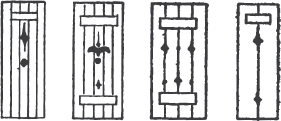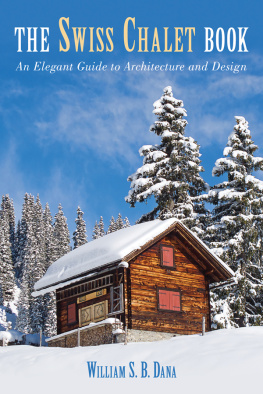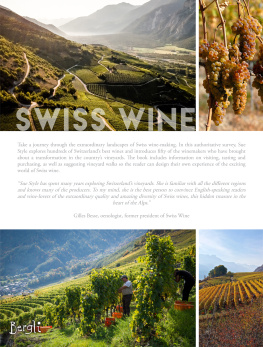
CHLET OF THE VINE, INTERLAKEN
Copyright 2012 by William S. B. Dana
All Rights Reserved. No part of this book may be reproduced in any manner without the express written consent of the publisher, except in the case of brief excerpts in critical reviews or articles. All inquiries should be addressed to Skyhorse Publishing, 307 West 36th Street, 11th Floor, New York, NY 10018.
Skyhorse Publishing books may be purchased in bulk at special discounts for sales promotion, corporate gifts, fund-raising, or educational purposes. Special editions can also be created to specifications. For details, contact the Special Sales Department, Skyhorse Publishing, 307 West 36th Street, 11th Floor, New York, NY 10018 or .
Skyhorse and Skyhorse Publishing are registered trademarks of Skyhorse Publishing, Inc., a Delaware corporation.
Visit our website at www.skyhorsepublishing.com.
10 9 8 7 6 5 4 3 2 1
Library of Congress Cataloging-in-Publication Data is available on file.
ISBN: 978-1-62087-100-3
Printed in the United States of America
TABLE OF CONTENTS

SHUTTERS
PREFACE
I N this book the author has endeavored to transport from the center of Europe to the western continentin as complete and illuminating a way as language and line may do itthe chlet of Switzerland. To some extent, too, it is hoped that the atmosphere itself has been reproduced.
A series of articles about Swiss chlet design appearing in Architecture and Building from November 1911 to May 1912 attempted to provide a logical presentation of this unique architecture, beginning with the simplest structural elements and leading up gradually through the larger system of construction to the question of the assignment of interior space and the beautifying of the external surfaces.
The Swiss Chlet Book is that series grown to larger proportions and much matured. The best works on the subject have been studied and made use of. The plans and photographs of the chlet architects and fabriques, as well as their written and detailed descriptions, have been an invaluable and indispensable aid in the preparation of these pages.
The author is indebted to foreign and domestic librarians, and to the publishers and printers staffs and photographers, whose efforts have contributed to the successful completion of this book.
The approval with which the magazine articles have already been met and the existence in this country of a large number of New World chletsespecially in California, and some of which appear in this volumeand the general interest in chlet architecture all carry the assurance of a greatly extended study and appreciation of the Swiss chlet.
WILLIAM S. B. DANA,
Grantwood, New Jersey, January, 1913

LIST OF ILLUSTRATIONS

INTRODUCTION
S TREAMS, not of lava, but of rich, life-giving soil, have been floating down for ages in the great riverways of the Danube, Seine, Rhine, Rhone, and Pofrom the peak of Europe, to replenish the lands of France, Germany, The Netherlands, Austria, and Italy. This erosion of both glacier and river has torn apart this mighty peak on every flank; rending the countryside into chasm, valley, mountainside, and cliff to form the ramparts of the Alpsthe citadel of Europe, which composes a large part of todays Switzerland.
Somewhere near the center of Asia were once erected the two pillars of the human race. From them issued forth great streams of humanity flowing to all parts of the earth; one of these arrived, at some remote time, in the region of the Alps and formed settlements at the most convenient and strategic points. In the time of the Romans, citadels were built along the northern frontier as places of defense against the hostile Germanic tribesthese were the beginnings of some of the cities of today, such as Berne and Solothurn on the Aare, and Basel on the Rhine.
It is not in these citadels, however, that we must look for the presence of the chlet, or its prototype. The chlet is rather the product of the outlying districts, the home of the agricultural and cattle-raising classes.
This particular stream of humanity that settled in modern Switzerland left behind (on its way from its starting place in Asia) a stream of habitations which, if it were in the power of human beings to discover and reveal, would set forth luminously the development from the ancient form of dwelling to the modern. In the Tyrolese Alps to the east of Switzerland, the dwellings are unmistakably of the same species as the Swiss chlet. An example of a Tyrolese chlet is given on .
Whether or not it would be possible to discover further to the east other links in the chain of chlet evolution, the fact remains that Viollet-le-Duc in lHistoire de lhabitation humaine makes this observation: You will be surprised if I tell you that the chlets of the Swiss mountains are exactly the same as one sees on the slopes of the Himalayas and in the valleys of Kashmir.
The illustration which accompanies the above quotation is reproduced on . The method of insulating from the earth is that of stilts rather than that of waterproof shoes. The future consoles, brackets, balconies, balustrades, gables, and wall beams are here seen in their original simplicity.
The primitive chlet was all inclusive; that is, it housed not only the human family or families, but also their most useful species of animals, together with their means of sustenance. A glance at the accompanying plans on will demonstrate this. A translation from Graffenried and Strlers Architecture Suisse (1844) gives a glimpse of native chlet-building on the cooperative, or community, plan: the native, when he decides to build secures a suitable plot. In mountainous regions, as at Iseltwald, where cultivated land is rare, the cost is about 1 cents per square foot. In less valuable locations, the cost is about a half-mill per square foot. For the wood for constructing his home, the builder, if he is poor, requests assistance from his local government. Each community owns its forests, and where these are not available, those of the state can be drawn upon for the purpose.
The timber having been selected, the friends and neighbors assist the home-maker in his work, the understanding being that he shall return the favor later by an equivalent service. The work is ordinarily done in winter when the farmer is free from the duties of the field and flock.
The early chlets were veritable fortresses in wood, their walls consisting of barricades of tree trunks in tiers, one trunk on top of the other, and notched firmly together at the corners, after the fashion of the log-cabins so familiar in America. The foes were by no means all human, as is evidenced in the case of stolid chlets built on the heights at the rear of which a sufficient number of trees have been left standing to form an additional protection against avalanches. Their roofs, which were allowed to make vast projections in many cases, were protected against the lifting power of mountain gales by heavy, rough stones placed in rows on top of them. In the twentieth century, these same constructive motives persist, but their bulk is greatly reduced, the walls being about half their former thickness, and huge projecting consoles having become diagonal braces.

















